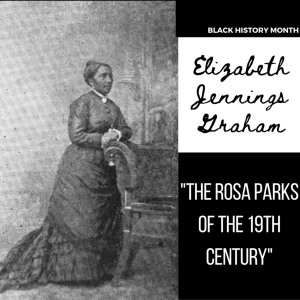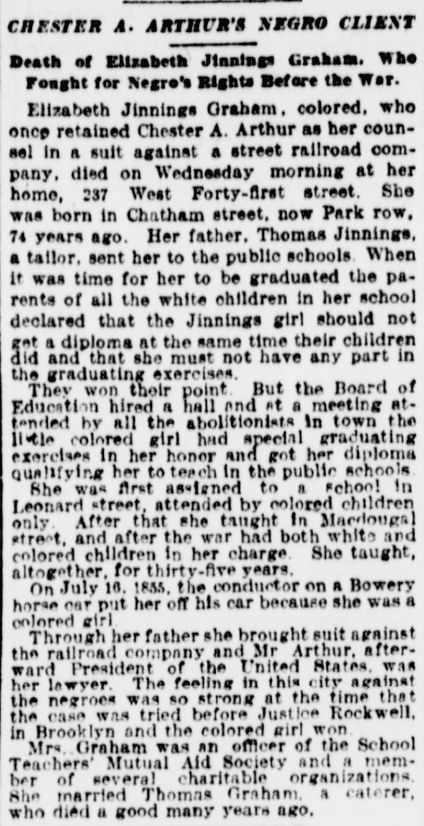February 21, 2022
Learn NYC's Own Rosa Parks
Learn NYC's Own Rosa Parks

Learn NYC's Own Rosa Parks
In honor of Black History Month - Elizabeth Jennings Graham - New York's "Own" Rosa Park. Years before Rosa Park's courageous stance a young woman in NYC had a similar story.

On Sunday, July 16, 1854, Elizabeth Jennings Graham a school teacher and church organist boarded a trolley at Pearl St and today’s Park Row. Along with her friend Sarah Adams they were in a rush and did not wait for a trolley that stated “ Colored People Allowed on this Car.
In an article written for Horace Greeley’s New York Tribune in February 1855, he wrote;
"She got upon one of the company’s cars last summer, on the Sabbath, to ride to church. The conductor undertook to get her off, first alleging the car was full; when that was shown to be false, he pretended the other passengers were displeased at her presence: but(when) she insisted on her rights, he took hold of her by force to expel her. She resisted. The conductor got her down on the platform, jammed her bonnet, soiled her dress, and injured her person. Quite a crowd gathered, but she effectively resisted. Finally, after the car had gone on further, with the aid of a policeman they succeeded in removing her."
The incident led to an organized effort by black New Yorkers to desegregate NYC streetcars. Frederick Douglass published the incident in his newspaper and it received national attention. Jennings' family filed a lawsuit on behalf of their daughter against the driver, the conductor, and the 3rd Avenue Railroad Company. Elizabeth was represented by the law firm of Culver, Parker, and Arthur. Her case was handled by the firm’s 24-year-old junior partner Chester A. Arthur, future president of the United States.
In 1855 the court ruled in her favor. She was awarded $250 in damages ( equivalent to $6,900 today) The Brooklyn Circuit Court Judge William Rockwell declared: “Colored persons if sober, well behaved and free from disease, had the same rights as others and could neither be excluded by any rules of the company nor by force of violence. The next day the Third Avenue Railroad Company ordered its cars desegregated.

Elizabeth Jenning went on to marry Charles Graham and to teach for 35 years. They had a son who died at age 1 of convulsions during the Draft Riots on July 16, 1863. With the help of a white undertaker, they were able to slip through the mob-filled streets and bury him in Cypress Hills Cemetery in Brooklyn. After the Draft Riots, the family left NYC for Monmouth County New Jersey. After Charles’ death, Elizabeth and her mother and sister returned to NYC.
In 1895 she founded the first kindergarten for black children at her home on West 41 St. and dies on June 5, 1901.
Today- thanks to a campaign by children from P.S. 361 in Manhattan a block of Park Row has been “so-named” Elizabeth Jennings Place. A statue of Elizabeth Jennings Graham is slated to be erected as part of the “She Built NYC” initiative. At the moment the location is being discussed.
For inquiries and questions about tours ( In-person or Virtual ), you can send an email or call. Stay tuned for Susan's next new blog!

